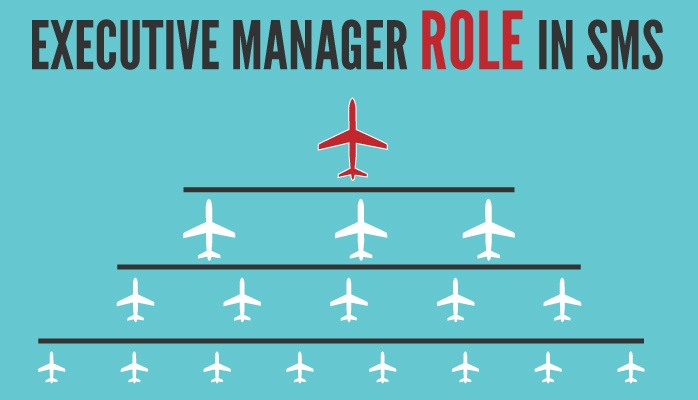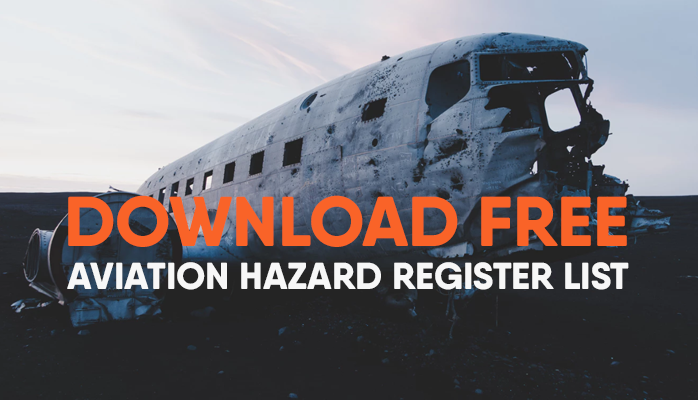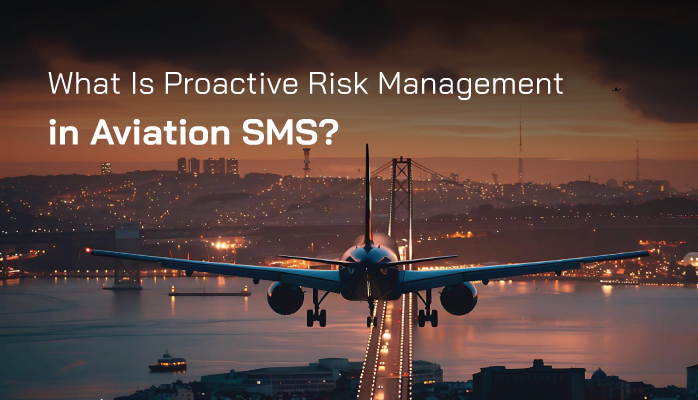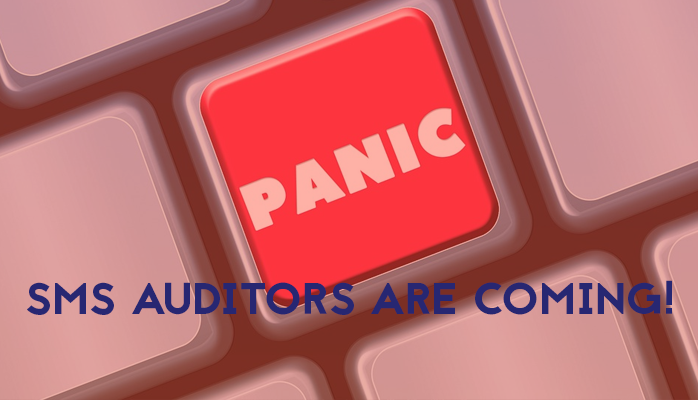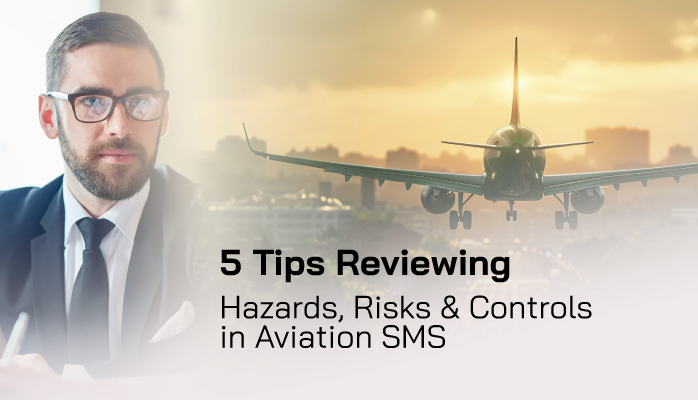Stu Martin
Stu Martin is an accomplished aerospace safety engineer with over 25 years of experience in the aviation industry. Beginning his career on the ramp, Stu developed a hands-on understanding of aircraft operations, maintenance, and safety protocols. His journey from ground operations to engineering has equipped him with a unique perspective on aviation safety, blending practical expertise with technical rigor. Stu has contributed to numerous safety initiatives, including the development of risk assessment frameworks and incident investigation protocols, earning recognition for his commitment to enhancing operational safety. A respected voice in the field, he continues to advocate for robust safety cultures within aviation organizations worldwide.
SMS Software Enhances Aviation ERPs
A critical component of aviation safety management is aviation emergency response planning, which ensures organizations are prepared to handle crises swiftly and effectively. Safety Management System (SMS) software, such as SMS Pro, plays a pivotal role in streamlining these processes, enhancing compliance with global standards, and improving operational resilience. This article explores how SMS software transforms emergency response planning, with a focus on SMS Pro’s powerful tools for incident management, workflow automation, and regulatory compliance.
Read More
Topics:
Aviation SMS Database,
Risk Management Software,
2-Safety Risk Management
For new aviation safety managers, preparing for Safety Management System (SMS) audits can feel overwhelming, especially when it comes to coaching accountable executives. These senior leaders, often focused on operational and financial priorities, may not be familiar with the intricacies of SMS or their critical role in ensuring compliance. Yet, their understanding of regulatory frameworks like ICAO Annex 19, FAA SMS guidelines, and EASA SMS requirements is essential for fostering a robust safety culture and passing audits.
Read More
Topics:
4-Safety Promotion,
3-Safety Assurance,
1-Safety Policy,
Risk Management Training,
FAA Compliance,
Safety Culture
A robust Safety Management System (SMS) is essential for managing risks and preventing incidents. For aviation safety managers and accountable executives—senior leaders responsible for SMS oversight—fostering a strong safety culture is a critical goal.
A Hazard Risk Register, a centralized tool for documenting and managing hazards, plays a pivotal role in achieving this by encouraging proactive hazard reporting, boosting staff engagement, and reinforcing a safety-first mindset.
Read More
Topics:
4-Safety Promotion,
2-Safety Risk Management,
Risk Management Training,
Safety Culture
Aviation Safety Management Systems (SMS) are designed to proactively identify, assess, and mitigate risks to ensure safe operations. A critical component of any SMS is the hazard register, a centralized record of identified hazards, their risks, and mitigation measures.
For many aviation organizations, especially smaller operators or those in the early stages of SMS implementation, spreadsheets (e.g., Microsoft Excel or Google Sheets) are a go-to tool for managing hazard registers. But is this approach effective in the long term?
Read More
Topics:
Aviation SMS Database,
3-Safety Assurance,
Risk Management Software,
2-Safety Risk Management
A robust Safety Management System (SMS) is critical for managing risks and ensuring compliance with global and national regulations. For aviation safety managers and accountable executives—senior leaders responsible for SMS oversight—the Hazard Register is a cornerstone tool for systematically tracking and mitigating hazards.
Establishing a regulatory compliant framework for the Hazard Register is essential to meet standards set by the International Civil Aviation Organization (ICAO) Annex 19 and national civil aviation authorities like the FAA (Part 5) or EASA, while fostering a proactive safety culture.
Read More
Topics:
Aviation SMS Database,
4-Safety Promotion,
Risk Management Software,
2-Safety Risk Management
Measure SMS Effectiveness with SPIs
In the aviation industry, ensuring safety is paramount. A robust Safety Management System (SMS) is critical for identifying hazards, mitigating risks, and fostering a proactive safety culture. But how do you know if your SMS is truly effective? The answer lies in Safety Performance Indicators (SPIs), data-driven metrics that allow safety managers to measure and monitor SMS performance. This comprehensive guide explores how to set and track SPIs using SMS software like SMS Pro, ensuring alignment with ICAO Annex 19 requirements for continuous improvement.
Read More
Topics:
Aviation SMS Database,
3-Safety Assurance,
Risk Management Software
The Need for a Proactive Safety Culture
Utility aviation, including power line inspections, wildfire monitoring, and infrastructure surveys, operates in high-risk environments where safety is paramount. The Federal Aviation Administration reports that 70% of utility aviation incidents stem from human factors, costing millions annually, according to the International Air Transport Association.
A proactive safety culture, where employees anticipate and address risks, is critical to prevent incidents and ensure compliance with ICAO Annex 19, FAA Part 5, Part 91, and Part 135. SMS Pro’s aviation SMS software, with its Part 5 Fulfillment modules, fosters this culture through anonymous reporting, comprehensive training, and real-time analytics, improving safety reporting by 40% in utility operations.
Read More
Topics:
4-Safety Promotion,
FAA Compliance
In commercial aviation, a robust Safety Management System (SMS) is critical for mitigating risks and ensuring compliance with regulatory standards, such as those set by the International Civil Aviation Organization (ICAO) and national civil aviation authorities like the FAA or EASA.
SMS audits, conducted internally or by regulators, evaluate the effectiveness of an organization’s SMS, identifying strengths and areas for improvement. For aviation safety managers and accountable executives—senior leaders responsible for SMS oversight—addressing audit findings promptly and effectively is essential to maintain compliance, enhance safety performance, and demonstrate leadership.
New safety managers often find the process of handling audit findings daunting, as it involves analyzing gaps, developing corrective actions, and engaging stakeholders.
Read More
Topics:
3-Safety Assurance,
Risk Management Training
Introduction: Navigating Hazards in Utility Aviation
Utility aviation, encompassing power line inspections, wildfire patrols, and infrastructure surveys, is vital for maintaining electrical grid reliability and public safety. However, these operations face significant hazards, with the Federal Aviation Administration attributing 70% of incidents to human factors, costing millions annually, per the International Air Transport Association.
Read More
Topics:
2-Safety Risk Management
Defining 24 Operational Safety Objectives for UAS Operations
Unmanned Aircraft Systems (UAS) are reshaping aviation, enabling tasks from infrastructure inspections to emergency deliveries. However, their safe integration into airspace hinges on robust risk management.
The Specific Operations Risk Assessment (SORA), developed by the Joint Authorities for Rulemaking on Unmanned Systems (JARUS), is a cornerstone framework for UAS safety, particularly in EASA’s Specific category. Central to SORA are its 24 Operational Safety Objectives (OSOs), which define the safety measures operators must implement to mitigate risks.
Read More
Topics:
3-Safety Assurance,
2-Safety Risk Management,
Risk Management Training


